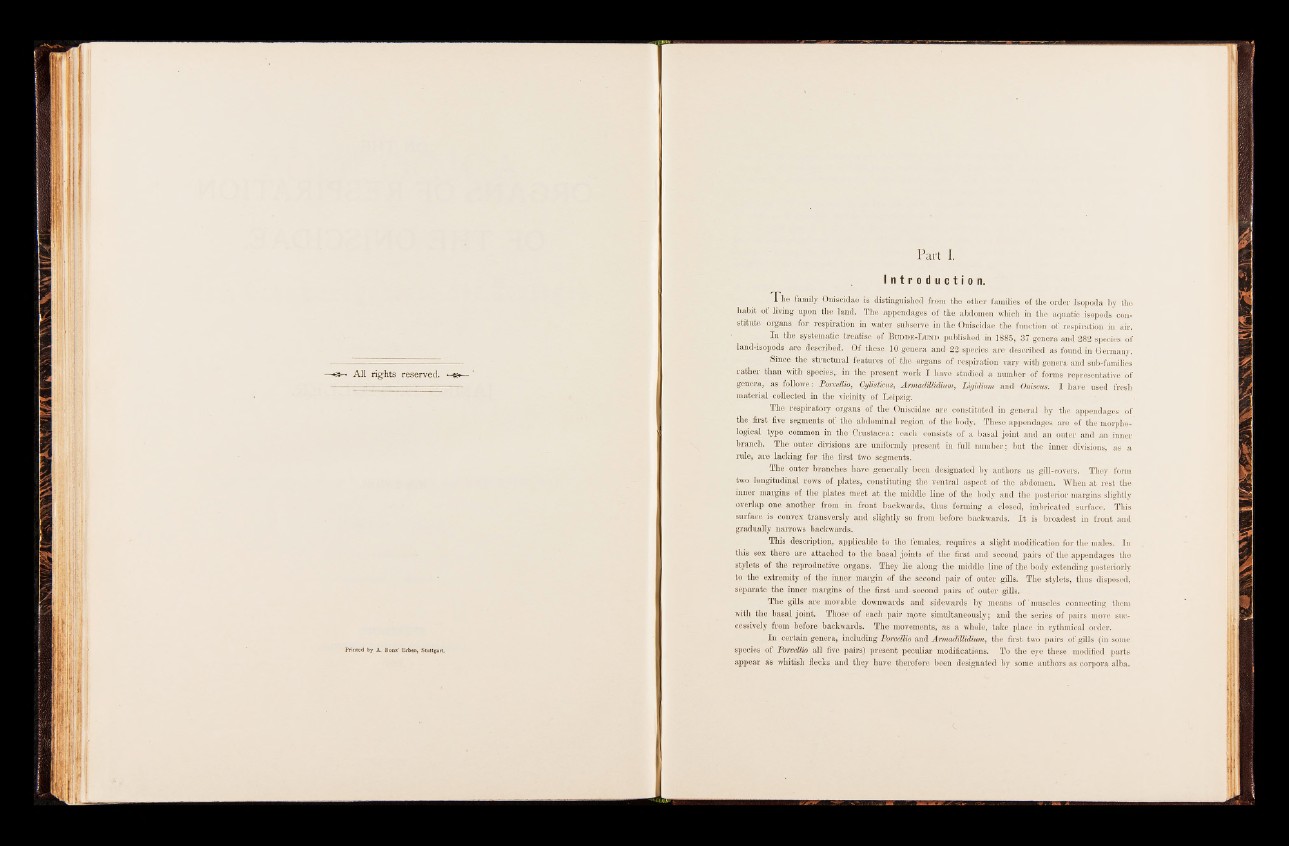
■ III II i l
All rights reserved.
Prin ted by A. Bon*’ Erben, Stuttgart.
Part I.
I n t r o d u c t i o n .
T h e family Oniscidae is distinguished from the other families of the order Isopoda by the
habit of living upon the land. The appendages of the, abdomen which in the aquatic isopods constitute
organs for respiration in water subserve in the Oniscidae the function of respiration in air.
In the systematic treatise of B u d d e - L u n d published in 1885, 37 genera and 282 species of
land-isopods are described. Of these 10 genera and 22 species are described as found in Germany.
Since the structural features of the organs of respiration vary with genera and sub-families
lather than with species,, in the present work I have studied a number of forms representative of
genera, as followe: PorceUio, Cylisticus, Armadillidium, Ligidium and Oniscus. I have used fresh
material collected in the vicinity of Leipzig.
The respiratory organs of the Oniscidae are constituted in general by the appendages of
the first five segments of the abdominal region of the body. These appendages are of the morphological
type common in the Crustacea: each consists of a basal joint and an outer and an inner
branch. The outer divisions are uniformly present in full number; but the inner divisions, as a
rule, are lacking for the first two segments.
The outer branches have generally been designated by authors as gill-covers. They form
two longitudinal rows of plates, constituting the ventral aspect of the abdomen. When at rest the
inner margins of the plates meet at the middle line of the body and the posterior margins slightly
overlap one another from in front backwards, thus forming a closed, imbricated surface. This
surface is convex transversly and slightly so from before backwards. It is broadest in front and
gradually narrows backwards.
This description, applicable to the females, requires a slight modification for the males. In
this sex there are attached to the basal joints of the first and second pairs of the appendages the
stylets of the reproductive organs. They lie along the middle line of the body extending posteriorly
to the extremity of the inner margin of the second pair of outer gills. The stylets, thus disposed,
separate the inner margins of the first and-second pairs of outer gills.
The gills are movable downwards and sidewards by means of muscles connecting them
with the basal joint. Those of each pair move simultaneously; and the series of pairs move successively
from before backwards. The movements, as a whole, take place in rythmical order.
In certain genera, including PorceUio and Armadillidium, the first two pairs of gills (in some
species of PorceUio all five pairs) present peculiar modifications. To the eye these modified parts
appear as whitish flecks and they have therefore been designated by some authors as corpora alba.